전설적인 피스타치오 웨이보 시리즈
- 시리즈 웨이보 디렉토리
-
- Python 마이크로 프로젝트 기술 포인트 사례 예제 시리즈
- 웨이보 디렉토리
-
- 1. 마이크로 프로젝트 목표
- 2. 프로토타입 샘플 코드
- 3. 아이디어 확장
- 4. 다양한 유형의 미인에 대한 샘플 코드 추가
- 5. 난이도 증가를 위한 샘플 코드
- 6. 특수 소품용 샘플 코드 추가
- 7. 레벨 시스템을 위한 샘플 코드 디자인
- 8. 음향 효과 및 배경 음악 샘플 코드 추가
- 9. 멀티플레이어 게임 모드 샘플 코드
- 10. 순위 및 업적 시스템 샘플 코드
- 11. 애니메이션 효과 샘플 코드 추가
시리즈 웨이보 디렉토리
Python 마이크로 프로젝트 기술 포인트 사례 예제 시리즈
웨이보 디렉토리
1. 마이크로 프로젝트 목표

pygame을 사용하여 미인을 평가하고, 미인을 평가하고, 아름다운 외모로 아름다운 미인을 감상하고, 중학교 프로그래밍을 재미있게 만드는 작은 게임의 객체 지향 샘플 코드를 구현합니다.
2. 프로토타입 샘플 코드
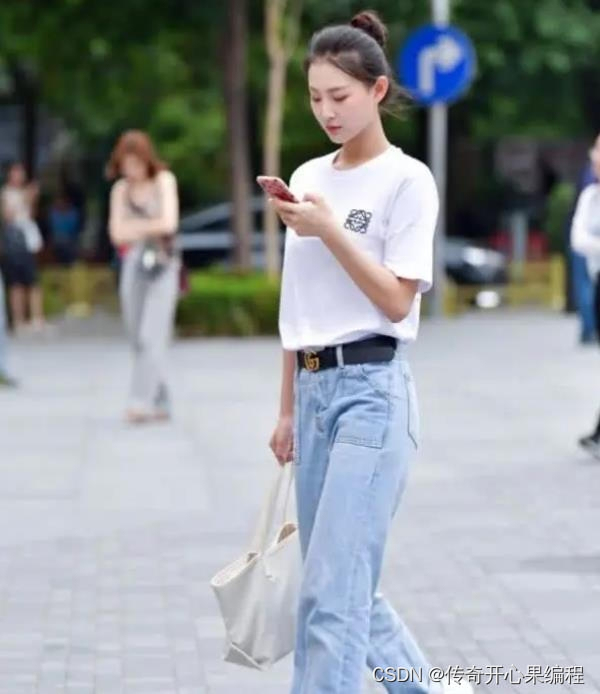 다음은 Pygame을 사용하여 미인을 평가하기 위한 객체 지향 프로그램을 구현하는 샘플 코드입니다:
다음은 Pygame을 사용하여 미인을 평가하기 위한 객체 지향 프로그램을 구현하는 샘플 코드입니다:
import pygame
import random
# 初始化游戏
pygame.init()
# 设置窗口大小和标题
screen_width = 800screen_height = 600
window = pygame.display.set_mode((screen_width, screen_height))
pygame.display.set_caption("给美女打分")
# 定义美女类
class Beauty(pygame.sprite.Sprite):
__init__(self, x, y):
().__init__()
self.image = pygame.image.loadbeauty.png") # 美女的
self.rect = self.image.get_rect()
self.rect.center = (x, y)
def update(self):
pass
# 定义分数类
class Score(pygame.sprite.Sprite):
def __init__(self, x, y):
super().__init__()
self.score = 0
self.font = pygame.font.Font(None, 36)
self.text = self.font.render("Score: " + str(self.score), True, (255, 255, 255))
self.rect = self.text.get_rect()
self.rect.center = (x, y)
def update(self):
self.text = self.font.render("Score: " + str(self.score), True, (255, 255, 255))
# 创建精灵组
all_sprites = pygame.sprite.Group()
# 创建美女对象
beauty = Beauty(screen_width // 2, screen_height // 2)
all_sprites.add(beauty)
# 创建分数对象
score = Score(screen_width // 2, 50)
all_sprites.add(score)
# 游戏主循环
running = True
clock = pygame.time.Clock()
while running:
clock.tick(60)
# 事件处理
for event in pygame.event.get():
if event.type == pygame.QUIT:
running = False
# 更新精灵组中的所有精灵
all_sprites.update()
# 绘制背景
window.fill((0, 0, 0))
# 绘制所有精灵
all_sprites.draw(window)
# 刷新屏幕
pygame.display.flip()
# 退出游戏
pygame.quit()
참고로, 위 코드에서는 프로그램 실행에 필요한 리소스 파일로 "beauty.png"라는 이름의 뷰티 사진이 준비되어 있어야 합니다. 필요에 따라 아름다운 여성의 다른 사진으로 교체할 수 있습니다. 코드를 실행한 후 마우스를 사용하여 창에서 아름다움을 평가할 수 있습니다. 프로그램은 창 제목 표시줄에 현재 점수를 표시합니다.
3. 아이디어 확장
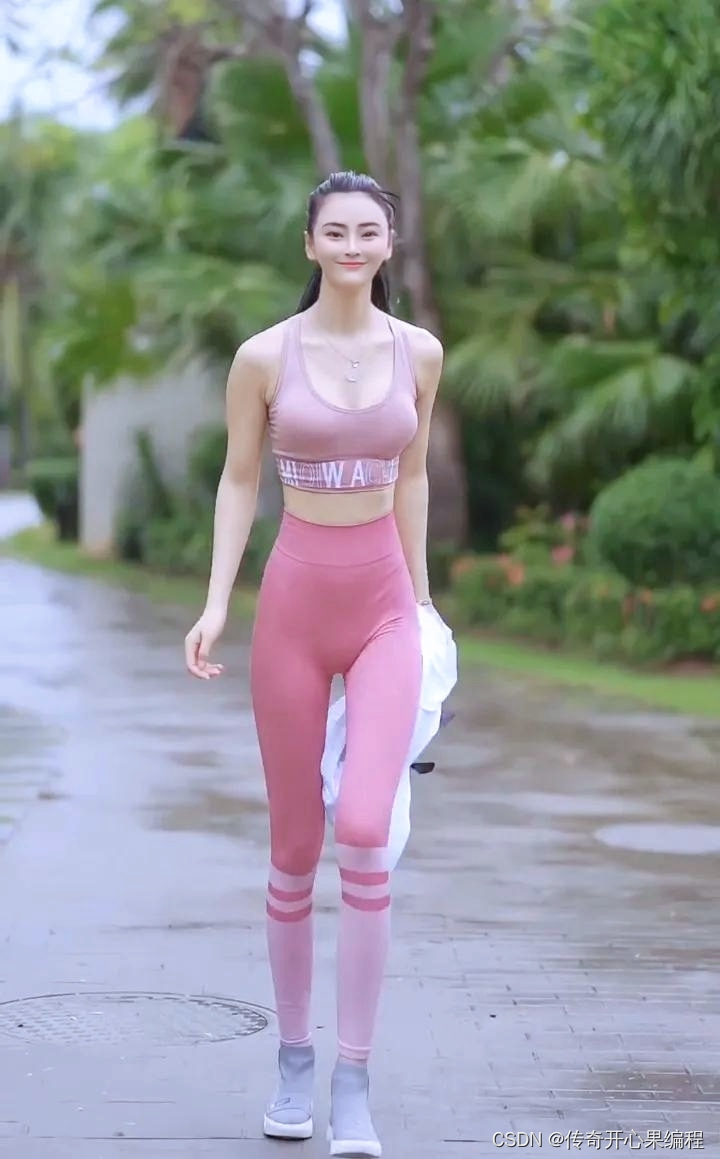 파이게임을 사용하여 객체지향 뷰티 점수 프로그램을 구현하는 것은 단순한 예일 뿐입니다. 많은 확장 아이디어가 있을 수 있습니다. 가능한 확장 아이디어는 다음과 같습니다:
파이게임을 사용하여 객체지향 뷰티 점수 프로그램을 구현하는 것은 단순한 예일 뿐입니다. 많은 확장 아이디어가 있을 수 있습니다. 가능한 확장 아이디어는 다음과 같습니다:
-
다양한 유형의 미인 추가: 여러 미인 개체를 생성하고 다양한 그림 리소스를 사용하여 다양한 유형의 미인을 나타낼 수 있습니다. 각 미인은 자신만의 점수와 특별한 속성을 가질 수 있습니다.
-
난이도 높이기: 미녀의 이동 속도와 출현 빈도를 높이거나 점수 획득 난이도를 높이는 등 플레이어의 점수에 따라 게임의 난이도를 조정할 수 있습니다.
-
특수 소품 추가: 일부 특수 소품을 게임에 추가할 수 있습니다. 플레이어는 클릭하여 소품을 획득하여 점수를 높이거나 게임 규칙을 변경할 수 있습니다.
-
디자인 레벨 시스템: 각각 다른 아름다움과 게임 목표를 가진 여러 레벨을 디자인할 수 있습니다. 플레이어는 레벨을 통과하기 위해 필요한 만큼 아름다운 점수를 획득해야 합니다.
-
음향 효과 및 배경 음악 추가: 게임에 음향 효과 및 배경 음악을 추가하여 게임의 재미와 분위기를 높일 수 있습니다.
-
멀티플레이어 게임 모드: 멀티플레이어 게임 모드를 추가하면 여러 플레이어가 동시에 득점에 참여하고 누가 더 높은 점수를 가지고 있는지 비교할 수 있습니다.
-
순위 및 달성 시스템: 플레이어의 최고 점수를 기록할 수 있으며, 플레이어가 경쟁하고 비교할 수 있도록 순위 및 달성 시스템을 제공합니다.
-
애니메이션 효과 추가: 미녀의 등장, 사라짐, 득점 등에 애니메이션 효과를 추가하여 게임을 더욱 생생하고 흥미롭게 만들 수 있습니다.
이는 가능한 확장 아이디어 중 일부일 뿐이며, 자신의 창의성과 필요에 따라 더욱 흥미로운 기능과 게임 플레이를 디자인하고 구현할 수 있습니다. Pygame이 제공하는 풍부한 기능과 유연성을 사용하면 이 간단한 채점 프로그램을 재미있는 게임으로 확장할 수 있습니다.
4. 다양한 유형의 미인에 대한 샘플 코드 추가
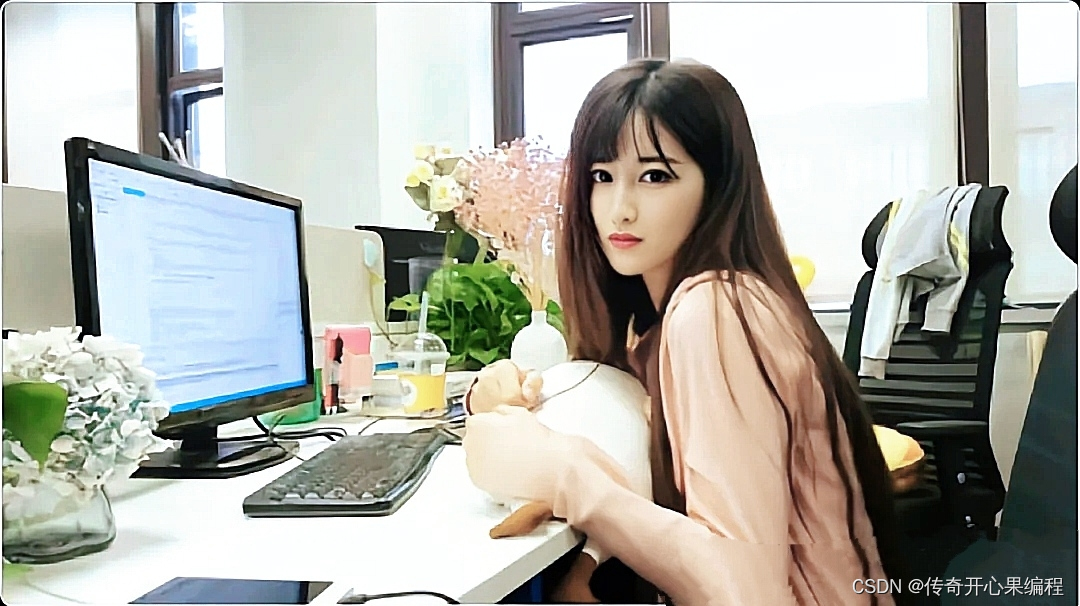 다음은 다양한 유형의 미인에 대해 확장된 샘플 코드입니다.
다음은 다양한 유형의 미인에 대해 확장된 샘플 코드입니다.
import pygame
import random
# 初始化游戏
pygame.init()
# 设置窗口大小和标题
screen_width = 800
screen_height = 600
window = pygame.display.set_mode((screen_width, screen_height))
pygame.display.set_caption("给美女打分")
# 定义美女类
class Beauty(pygame.sprite.Sprite):
def __init__(self, x, y, image, score, special_attribute):
super().__init__()
self.image = pygame.image.load(image) # 美女的图片资源
self.rect = self.image.get_rect()
self.rect.center = (x, y)
self.score = score # 美女的得分
self.special_attribute = special_attribute # 美女的特殊属性
def update(self):
pass
# 定义分数类
class Score(pygame.sprite.Sprite):
def __init__(self, x, y):
super().__init__()
self.score = 0
self.font = pygame.font.Font(None, 36)
self.text = self.font.render("Score: " + str(self.score), True, (255, 255, 255))
self.rect = self.text.get_rect()
self.rect.center = (x, y)
def update(self):
self.text = self.font.render("Score: " + str(self.score), True, (255, 255, 255))
# 创建精灵组
all_sprites = pygame.sprite.Group()
# 创建美女对象
beauty1 = Beauty(screen_width // 2 - 100, screen_height // 2, "beauty1.png", 10, "可爱")
beauty2 = Beauty(screen_width // 2 + 100, screen_height // 2, "beauty2.png", 20, "靓丽")
all_sprites.add(beauty1)
all_sprites.add(beauty2)
# 创建分数对象
score = Score(screen_width // 2, 50)
all_sprites.add(score)
# 游戏主循环
running = True
clock = pygame.time.Clock()
while running:
clock.tick(60)
# 事件处理
for event in pygame.event.get():
if event.type == pygame.QUIT:
running = False
# 更新精灵组中的所有精灵
all_sprites.update()
# 绘制背景
window.fill((0, 0, 0))
# 绘制所有精灵
all_sprites.draw(window)
# 刷新屏幕
pygame.display.flip()
# 退出游戏
pygame.quit()
이 샘플 코드에서는 beauty1과 beauty2라는 두 가지 유형의 뷰티 개체를 만듭니다. 이들은 각각 서로 다른 이미지 리소스("beauty1.png" 및 "beauty2.png")를 사용하며 서로 다른 점수와 특수 속성을 갖습니다. 필요에 따라 더 많은 뷰티 개체를 추가하고 각 뷰티에 대해 서로 다른 속성을 설정할 수 있습니다.
참고: 해당 뷰티 사진 리소스를 준비하고 이름을 "beauty1.png" 및 "beauty2.png"로 지정하고 샘플 코드와 동일한 디렉터리에 넣어야 합니다.
5. 난이도 증가를 위한 샘플 코드
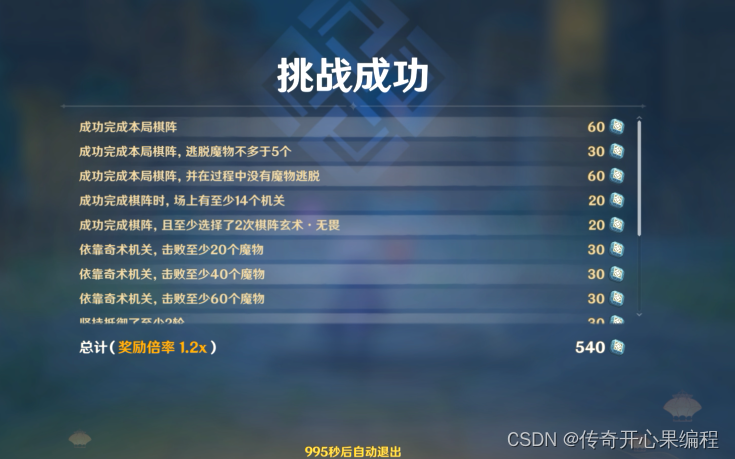 플레이어 점수에 따라 게임 난이도를 조정하는 예제 코드는 다음과 같습니다.
플레이어 점수에 따라 게임 난이도를 조정하는 예제 코드는 다음과 같습니다.
import pygame
import random
# 初始化游戏
pygame.init()
# 设置窗口大小和标题
screen_width = 800
screen_height = 600
window = pygame.display.set_mode((screen_width, screen_height))
pygame.display.set_caption("给美女打分")
# 定义美女类
class Beauty(pygame.sprite.Sprite):
def __init__(self, x, y, image, score, special_attribute, speed):
super().__init__()
self.image = pygame.image.load(image) # 美女的图片资源
self.rect = self.image.get_rect()
self.rect.center = (x, y)
self.score = score # 美女的得分
self.special_attribute = special_attribute # 美女的特殊属性
self.speed = speed # 美女的移动速度
def update(self):
self.rect.x += self.speed
# 定义分数类
class Score(pygame.sprite.Sprite):
def __init__(self, x, y):
super().__init__()
self.score = 0
self.font = pygame.font.Font(None, 36)
self.text = self.font.render("Score: " + str(self.score), True, (255, 255, 255))
self.rect = self.text.get_rect()
self.rect.center = (x, y)
def update(self):
self.text = self.font.render("Score: " + str(self.score), True, (255, 255, 255))
# 创建精灵组
all_sprites = pygame.sprite.Group()
# 创建美女对象
beauty1 = Beauty(screen_width // 2 - 100, screen_height // 2, "beauty1.png", 10, "可爱", 2)
beauty2 = Beauty(screen_width // 2 + 100, screen_height // 2, "beauty2.png", 20, "性感", 3)
all_sprites.add(beauty1)
all_sprites.add(beauty2)
# 创建分数对象
score = Score(screen_width // 2, 50)
all_sprites.add(score)
# 游戏主循环
running = True
clock = pygame.time.Clock()
spawn_timer = 0
difficulty_level = 1
while running:
clock.tick(60)
# 事件处理
for event in pygame.event.get():
if event.type == pygame.QUIT:
running = False
# 更新精灵组中的所有精灵
all_sprites.update()
# 控制美女的出现频率和移动速度
spawn_timer += 1
if spawn_timer >= 60 / difficulty_level:
beauty = Beauty(screen_width + 50, random.randint(50, screen_height - 50), "beauty1.png", 10, "可爱", random.randint(2, 4))
all_sprites.add(beauty)
spawn_timer = 0
# 碰撞检测
collisions = pygame.sprite.spritecollide(beauty1, all_sprites, True)
for collision in collisions:
score.score += collision.score
# 根据得分调整难度
if score.score >= 50 and difficulty_level < 3:
difficulty_level = 2
elif score.score >= 100 and difficulty_level < 4:
difficulty_level = 3
# 绘制背景
window.fill((0, 0, 0))
# 绘制所有精灵
all_sprites.draw(window)
# 刷新屏幕
pygame.display.flip()
# 退出游戏
pygame.quit()
spawn_timer이 샘플 코드에서는 아름다운 여성의 빈도를 제어하는 변수를 도입합니다 . 매 프레임마다 증가하며 spawn_timer특정 값에 도달하면 새로운 뷰티 개체가 생성되고 spawn_timer0으로 재설정됩니다. 점수가 높아질수록 difficulty_level변수도 점차 늘어나게 되어 미용의 이동속도와 빈도에 영향을 미치게 됩니다.
참고: 해당 뷰티 사진 리소스를 준비하고 이름을 "beauty1.png" 및 "beauty2.png"로 지정하고 샘플 코드와 동일한 디렉터리에 넣어야 합니다.
6. 특수 소품용 샘플 코드 추가
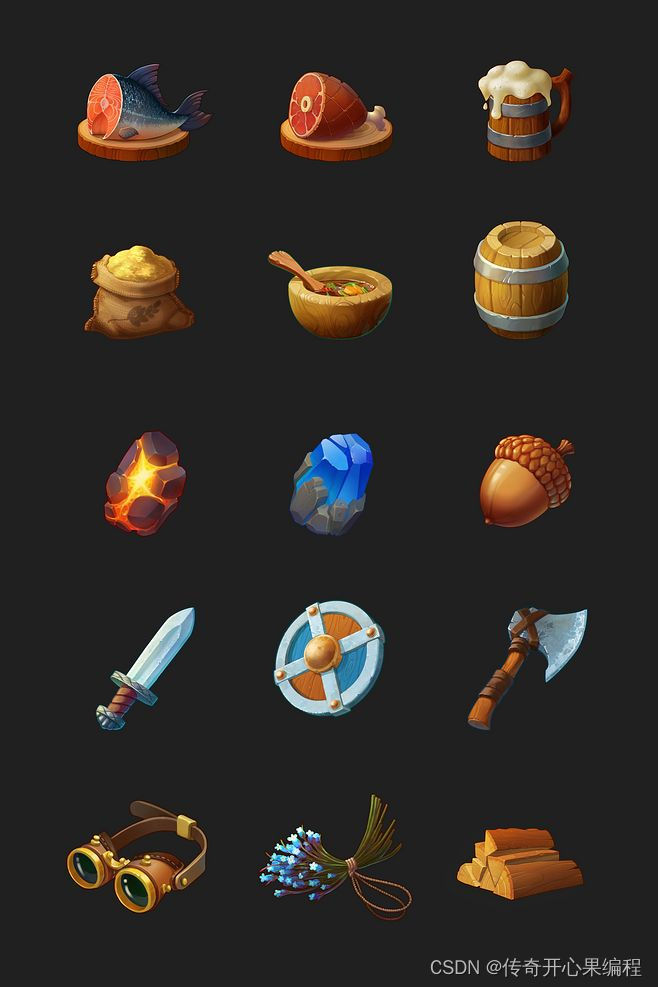 다음은 특수 소품을 추가하는 샘플 코드입니다.
다음은 특수 소품을 추가하는 샘플 코드입니다.
import pygame
import random
# 初始化游戏
pygame.init()
# 设置窗口大小和标题
screen_width = 800
screen_height = 600
window = pygame.display.set_mode((screen_width, screen_height))
pygame.display.set_caption("给美女打分")
# 定义美女类
class Beauty(pygame.sprite.Sprite):
def __init__(self, x, y, image, score, special_attribute, speed):
super().__init__()
self.image = pygame.image.load(image) # 美女的图片资源
self.rect = self.image.get_rect()
self.rect.center = (x, y)
self.score = score # 美女的得分
self.special_attribute = special_attribute # 美女的特殊属性
self.speed = speed # 美女的移动速度
def update(self):
self.rect.x += self.speed
# 定义分数类
class Score(pygame.sprite.Sprite):
def __init__(self, x, y):
super().__init__()
self.score = 0
self.font = pygame.font.Font(None, 36)
self.text = self.font.render("Score: " + str(self.score), True, (255, 255, 255))
self.rect = self.text.get_rect()
self.rect.center = (x, y)
def update(self):
self.text = self.font.render("Score: " + str(self.score), True, (255, 255, 255))
# 定义道具类
class PowerUp(pygame.sprite.Sprite):
def __init__(self, x, y, image, effect):
super().__init__()
self.image = pygame.image.load(image) # 道具的图片资源
self.rect = self.image.get_rect()
self.rect.center = (x, y)
self.effect = effect # 道具的效果
def update(self):
pass
# 创建精灵组
all_sprites = pygame.sprite.Group()
# 创建美女对象
beauty1 = Beauty(screen_width // 2 - 100, screen_height // 2, "beauty1.png", 10, "可爱", 2)
beauty2 = Beauty(screen_width // 2 + 100, screen_height // 2, "beauty2.png", 20, "性感", 3)
all_sprites.add(beauty1)
all_sprites.add(beauty2)
# 创建分数对象
score = Score(screen_width // 2, 50)
all_sprites.add(score)
# 创建道具对象
power_up = PowerUp(screen_width // 2, screen_height // 2, "power_up.png", "double_score")
all_sprites.add(power_up)
# 游戏主循环
running = True
clock = pygame.time.Clock()
spawn_timer = 0
difficulty_level = 1
while running:
clock.tick(60)
# 事件处理
for event in pygame.event.get():
if event.type == pygame.QUIT:
running = False
elif event.type == pygame.MOUSEBUTTONDOWN:
if power_up.rect.collidepoint(event.pos):
if power_up.effect == "double_score":
score.score *= 2
power_up.kill()
# 更新精灵组中的所有精灵
all_sprites.update()
# 控制美女的出现频率和移动速度
spawn_timer += 1
if spawn_timer >= 60 / difficulty_level:
beauty = Beauty(screen_width + 50, random.randint(50, screen_height - 50), "beauty1.png", 10, "可爱", random.randint(2, 4))
all_sprites.add(beauty)
spawn_timer = 0
# 碰撞检测
collisions = pygame.sprite.spritecollide(beauty1, all_sprites, True)
for collision in collisions:
score.score += collision.score
# 绘制背景
window.fill((0, 0, 0))
# 绘制所有精灵
all_sprites.draw(window)
# 刷新屏幕
pygame.display.flip()
# 退出游戏
pygame.quit()
PowerUp이 샘플 코드에서는 클릭하면 얻을 수 있는 소품을 나타내는 클래스를 만듭니다 . 소품을 클릭하면 소품의 효과에 따라 점수가 올라가거나 게임 규칙이 변경됩니다. 예시에서 소품의 효과는 점수를 두 배로 늘리는 것이며, 플레이어가 소품을 클릭하면 점수가 두 배로 늘어납니다.
참고: 해당 뷰티 이미지 리소스("beauty1.png" 및 "beauty2.png")와 소품 이미지 리소스("power_up.png")를 준비하고 샘플 코드와 동일한 디렉터리에 배치해야 합니다.
7. 레벨 시스템을 위한 샘플 코드 디자인
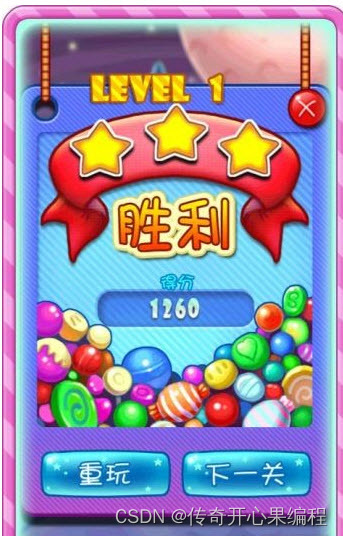 레벨 시스템을 설계하기 위한 샘플 코드는 다음과 같습니다.
레벨 시스템을 설계하기 위한 샘플 코드는 다음과 같습니다.
import pygame
import random
# 初始化游戏
pygame.init()
# 设置窗口大小和标题
screen_width = 800
screen_height = 600
window = pygame.display.set_mode((screen_width, screen_height))
pygame.display.set_caption("给美女打分")
# 定义美女类
class Beauty(pygame.sprite.Sprite):
def __init__(self, x, y, image, score, special_attribute, speed):
super().__init__()
self.image = pygame.image.load(image) # 美女的图片资源
self.rect = self.image.get_rect()
self.rect.center = (x, y)
self.score = score # 美女的得分
self.special_attribute = special_attribute # 美女的特殊属性
self.speed = speed # 美女的移动速度
def update(self):
self.rect.x += self.speed
# 定义分数类
class Score(pygame.sprite.Sprite):
def __init__(self, x, y, target_score):
super().__init__()
self.score = 0
self.target_score = target_score # 目标得分
self.font = pygame.font.Font(None, 36)
self.text = self.font.render("Score: " + str(self.score), True, (255, 255, 255))
self.rect = self.text.get_rect()
self.rect.center = (x, y)
def update(self):
self.text = self.font.render("Score: " + str(self.score), True, (255, 255, 255))
# 定义关卡类
class Level:
def __init__(self, target_score, beauties):
self.target_score = target_score # 目标得分
self.beauties = beauties # 美女列表
def is_completed(self, score):
return score >= self.target_score
# 创建精灵组
all_sprites = pygame.sprite.Group()
# 创建关卡列表
levels = [
Level(50, [
Beauty(screen_width // 2 - 100, screen_height // 2, "beauty1.png", 10, "可爱", 2),
Beauty(screen_width // 2 + 100, screen_height // 2, "beauty2.png", 20, "性感", 3)
]),
Level(100, [
Beauty(screen_width // 2 - 100, screen_height // 2, "beauty3.png", 15, "甜美", 3),
Beauty(screen_width // 2 + 100, screen_height // 2, "beauty4.png", 25, "迷人", 4)
])
]
current_level = 0
level = levels[current_level]
# 创建分数对象
score = Score(screen_width // 2, 50, level.target_score)
all_sprites.add(score)
# 将当前关卡的美女添加到精灵组中
for beauty in level.beauties:
all_sprites.add(beauty)
# 游戏主循环
running = True
clock = pygame.time.Clock()
spawn_timer = 0
difficulty_level = 1
while running:
clock.tick(60)
# 事件处理
for event in pygame.event.get():
if event.type == pygame.QUIT:
running = False
# 更新精灵组中的所有精灵
all_sprites.update()
# 控制美女的出现频率和移动速度
spawn_timer += 1
if spawn_timer >= 60 / difficulty_level:
beauty = random.choice(level.beauties)
beauty = Beauty(screen_width + 50, random.randint(50, screen_height - 50), beauty.image, beauty.score, beauty.special_attribute, random.randint(2, 4))
all_sprites.add(beauty)
spawn_timer = 0
# 碰撞检测
collisions = pygame.sprite.spritecollide(beauty, all_sprites, True)
for collision in collisions:
score.score += collision.score
# 检查当前关卡是否完成
if level.is_completed(score.score):
current_level += 1
if current_level < len(levels):
level = levels[current_level]
score = Score(screen_width // 2, 50, level.target_score)
all_sprites.add(score)
for beauty in level.beauties:
all_sprites.add(beauty)
else:
running = False
# 绘制背景
window.fill((0, 0, 0))
# 绘制所有精灵
all_sprites.draw(window)
# 刷新屏幕
pygame.display.flip()
# 退出游戏
pygame.quit()
Level이 샘플 코드에서는 각각 목표 점수와 미녀 세트가 있는 레벨을 나타내는 클래스를 만듭니다 . 게임의 메인 루프에서는 현재 레벨의 점수가 목표 점수에 도달했는지 확인하고, 도달했다면 다음 레벨로 넘어갑니다. 모든 레벨이 완료되면 게임이 종료됩니다.
참고: 해당 뷰티 이미지 리소스("beauty1.png", "beauty2.png", "beauty3.png", "beauty4.png")를 준비하고 샘플 코드와 동일한 디렉터리에 넣어야 합니다. 각 레벨은 필요에 따라 다양한 아름다움과 목표 점수로 디자인될 수 있습니다.
8. 음향 효과 및 배경 음악 샘플 코드 추가
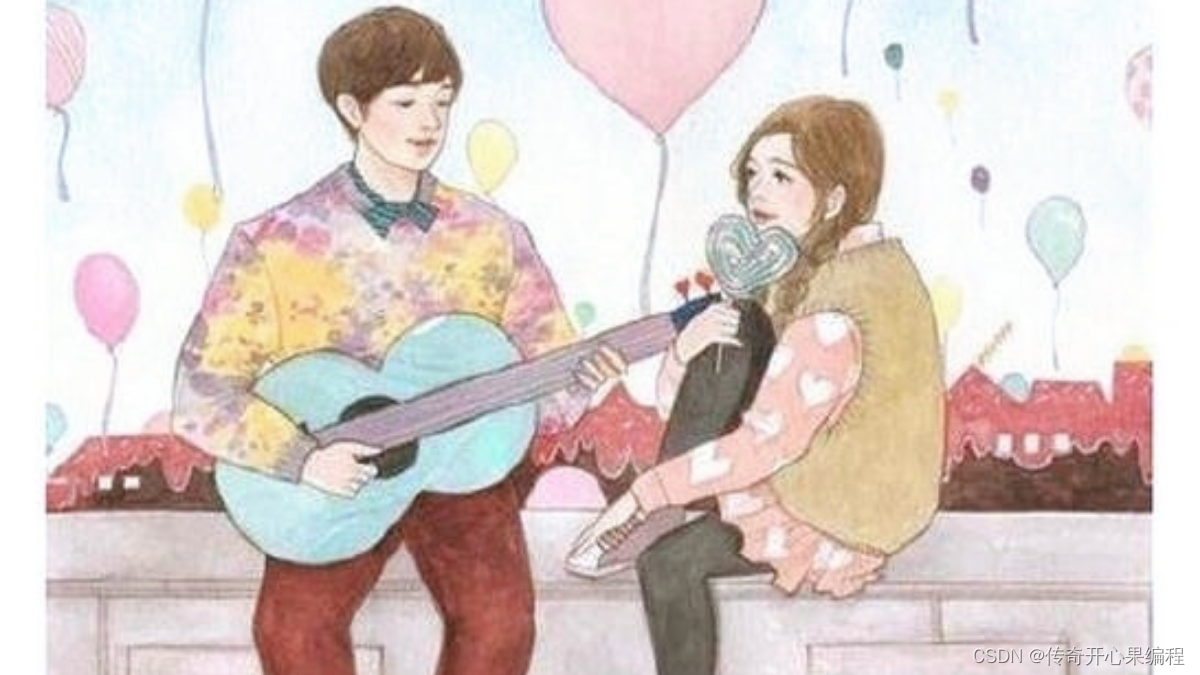 게임에 음향 효과와 배경 음악을 추가하기 위한 샘플 코드는 다음과 같습니다.
게임에 음향 효과와 배경 음악을 추가하기 위한 샘플 코드는 다음과 같습니다.
import pygame
import random
# 初始化游戏
pygame.init()
# 设置窗口大小和标题
screen_width = 800
screen_height = 600
window = pygame.display.set_mode((screen_width, screen_height))
pygame.display.set_caption("给美女打分")
# 加载背景音乐
pygame.mixer.music.load("background_music.mp3")
pygame.mixer.music.set_volume(0.5) # 设置音量
pygame.mixer.music.play(-1) # 循环播放背景音乐
# 加载音效
score_sound = pygame.mixer.Sound("score_sound.wav")
# 定义美女类
class Beauty(pygame.sprite.Sprite):
def __init__(self, x, y, image, score, special_attribute, speed):
super().__init__()
self.image = pygame.image.load(image) # 美女的图片资源
self.rect = self.image.get_rect()
self.rect.center = (x, y)
self.score = score # 美女的得分
self.special_attribute = special_attribute # 美女的特殊属性
self.speed = speed # 美女的移动速度
def update(self):
self.rect.x += self.speed
# 定义分数类
class Score(pygame.sprite.Sprite):
def __init__(self, x, y, target_score):
super().__init__()
self.score = 0
self.target_score = target_score # 目标得分
self.font = pygame.font.Font(None, 36)
self.text = self.font.render("Score: " + str(self.score), True, (255, 255, 255))
self.rect = self.text.get_rect()
self.rect.center = (x, y)
def update(self):
self.text = self.font.render("Score: " + str(self.score), True, (255, 255, 255))
# 定义关卡类
class Level:
def __init__(self, target_score, beauties):
self.target_score = target_score # 目标得分
self.beauties = beauties # 美女列表
def is_completed(self, score):
return score >= self.target_score
# 创建精灵组
all_sprites = pygame.sprite.Group()
# 创建关卡列表
levels = [
Level(50, [
Beauty(screen_width // 2 - 100, screen_height // 2, "beauty1.png", 10, "可爱", 2),
Beauty(screen_width // 2 + 100, screen_height // 2, "beauty2.png", 20, "性感", 3)
]),
Level(100, [
Beauty(screen_width // 2 - 100, screen_height // 2, "beauty3.png", 15, "甜美", 3),
Beauty(screen_width // 2 + 100, screen_height // 2, "beauty4.png", 25, "迷人", 4)
])
]
current_level = 0
level = levels[current_level]
# 创建分数对象
score = Score(screen_width // 2, 50, level.target_score)
all_sprites.add(score)
# 将当前关卡的美女添加到精灵组中
for beauty in level.beauties:
all_sprites.add(beauty)
# 游戏主循环
running = True
clock = pygame.time.Clock()
spawn_timer = 0
difficulty_level = 1
while running:
clock.tick(60)
# 事件处理
for event in pygame.event.get():
if event.type == pygame.QUIT:
running = False
# 更新精灵组中的所有精灵
all_sprites.update()
# 控制美女的出现频率和移动速度
spawn_timer += 1
if spawn_timer >= 60 / difficulty_level:
beauty = random.choice(level.beauties)
beauty = Beauty(screen_width + 50, random.randint(50, screen_height - 50), beauty.image, beauty.score, beauty.special_attribute, random.randint(2, 4))
all_sprites.add(beauty)
spawn_timer = 0
# 碰撞检测
collisions = pygame.sprite.spritecollide(beauty, all_sprites, True)
for collision in collisions:
score.score += collision.score
score_sound.play() # 播放得分音效
# 检查当前关卡是否完成
if level.is_completed(score.score):
current_level += 1
if current_level < len(levels):
level = levels[current_level]
score = Score(screen_width // 2, 50, level.target_score)
all_sprites.add(score)
for beauty in level.beauties:
all_sprites.add(beauty)
else:
running = False
# 绘制背景
window.fill((0, 0, 0))
# 绘制所有精灵
all_sprites.draw(window)
# 刷新屏幕
pygame.display.flip()
# 停止背景音乐
pygame.mixer.music.stop()
# 退出游戏
pygame.quit()
pygame.mixer.music이 샘플 코드에서는 모듈을 사용하여 배경 음악을 로드하고 재생합니다. 또한 pygame.mixer.Sound클래스를 사용하여 음향 효과 파일을 로드하고 미녀가 맞았을 때 점수 음향 효과를 재생합니다.
참고: 해당 음악 파일("Background_music.mp3")과 사운드 효과 파일("score_sound.wav")을 준비하고 샘플 코드와 동일한 디렉터리에 넣어야 합니다. 음악 파일과 음향 효과 파일의 파일 경로가 올바른지 확인하세요.
9. 멀티플레이어 게임 모드 샘플 코드
 멀티플레이어 모드를 추가하는 샘플 코드는 다음과 같습니다.
멀티플레이어 모드를 추가하는 샘플 코드는 다음과 같습니다.
import pygame
import random
# 初始化游戏
pygame.init()
# 设置窗口大小和标题
screen_width = 800
screen_height = 600
window = pygame.display.set_mode((screen_width, screen_height))
pygame.display.set_caption("给美女打分 - 多人游戏模式")
# 加载背景音乐
pygame.mixer.music.load("background_music.mp3")
pygame.mixer.music.set_volume(0.5) # 设置音量
pygame.mixer.music.play(-1) # 循环播放背景音乐
# 加载音效
score_sound = pygame.mixer.Sound("score_sound.wav")
# 定义美女类
class Beauty(pygame.sprite.Sprite):
def __init__(self, x, y, image, score, special_attribute, speed):
super().__init__()
self.image = pygame.image.load(image) # 美女的图片资源
self.rect = self.image.get_rect()
self.rect.center = (x, y)
self.score = score # 美女的得分
self.special_attribute = special_attribute # 美女的特殊属性
self.speed = speed # 美女的移动速度
def update(self):
self.rect.x += self.speed
# 定义分数类
class Score(pygame.sprite.Sprite):
def __init__(self, x, y, player_name):
super().__init__()
self.score = 0
self.player_name = player_name # 玩家名称
self.font = pygame.font.Font(None, 36)
self.text = self.font.render(self.player_name + ": " + str(self.score), True, (255, 255, 255))
self.rect = self.text.get_rect()
self.rect.center = (x, y)
def update(self):
self.text = self.font.render(self.player_name + ": " + str(self.score), True, (255, 255, 255))
# 定义关卡类
class Level:
def __init__(self, target_score, beauties):
self.target_score = target_score # 目标得分
self.beauties = beauties # 美女列表
def is_completed(self, score):
return score >= self.target_score
# 创建精灵组
all_sprites = pygame.sprite.Group()
# 创建关卡列表
levels = [
Level(50, [
Beauty(screen_width // 2 - 100, screen_height // 2, "beauty1.png", 10, "可爱", 2),
Beauty(screen_width // 2 + 100, screen_height // 2, "beauty2.png", 20, "性感", 3)
]),
Level(100, [
Beauty(screen_width // 2 - 100, screen_height // 2, "beauty3.png", 15, "甜美", 3),
Beauty(screen_width // 2 + 100, screen_height // 2, "beauty4.png", 25, "迷人", 4)
])
]
num_players = 2 # 玩家数量
players = [] # 玩家列表
# 创建玩家对象和分数对象
for i in range(num_players):
player_name = "Player " + str(i+1)
player_score = Score(screen_width // 2, 50 + i*50, player_name)
players.append(player_score)
all_sprites.add(player_score)
current_level = 0
level = levels[current_level]
# 将当前关卡的美女添加到精灵组中
for beauty in level.beauties:
all_sprites.add(beauty)
# 游戏主循环
running = True
clock = pygame.time.Clock()
spawn_timer = 0
difficulty_level = 1
while running:
clock.tick(60)
# 事件处理
for event in pygame.event.get():
if event.type == pygame.QUIT:
running = False
elif event.type == pygame.MOUSEBUTTONDOWN:
mouse_pos = pygame.mouse.get_pos()
clicked_sprites = [s for s in all_sprites if s.rect.collidepoint(mouse_pos)]
for sprite in clicked_sprites:
if isinstance(sprite, Beauty):
for player in players:
if player.rect.collidepoint(mouse_pos):
player.score += sprite.score
score_sound.play() # 播放得分音效
# 更新精灵组中的所有精灵
all_sprites.update()
# 控制美女的出现频率和移动速度
spawn_timer += 1
if spawn_timer >= 60 / difficulty_level:
beauty = random.choice(level.beauties)
beauty = Beauty(screen_width + 50, random.randint(50, screen_height - 50), beauty.image, beauty.score, beauty.special_attribute, random.randint(2, 4))
all_sprites.add(beauty)
spawn_timer = 0
# 检查当前关卡是否完成
if level.is_completed(players[0].score):
current_level += 1
if current_level < len(levels):
level = levels[current_level]
for player in players:
player.score = 0
for beauty in level.beauties:
all_sprites.add(beauty)
else:
running = False
# 绘制背景
window.fill((0, 0, 0))
# 绘制所有精灵
all_sprites.draw(window)
# 刷新屏幕
pygame.display.flip()
# 停止背景音乐
pygame.mixer.music.stop()
# 退出游戏
pygame.quit()
players이 샘플 코드에서는 여러 플레이어의 점수 개체를 저장하는 목록을 만듭니다 . 게임의 메인 루프에서는 마우스 클릭 이벤트를 확인하고 뷰티 객체의 클릭 위치와 충돌 감지를 기반으로 플레이어의 점수를 높입니다. 각 플레이어는 화면에 표시되는 자신만의 득점 개체를 가지고 있습니다.
참고: 해당 뷰티 이미지 리소스("beauty1.png", "beauty2.png", "beauty3.png", "beauty4.png")를 준비하고 샘플 코드와 동일한 디렉터리에 넣어야 합니다. 필요에 따라 플레이어 수와 관련 설정을 조정할 수 있습니다.
10. 순위 및 업적 시스템 샘플 코드
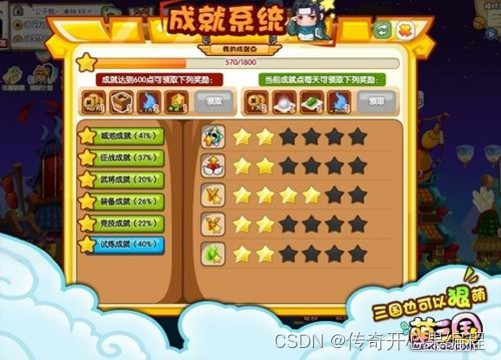 다음은 리더보드 및 성과 시스템을 추가하기 위한 샘플 코드입니다.
다음은 리더보드 및 성과 시스템을 추가하기 위한 샘플 코드입니다.
import pygame
import random
import json
# 初始化游戏
pygame.init()
# 设置窗口大小和标题
screen_width = 800
screen_height = 600
window = pygame.display.set_mode((screen_width, screen_height))
pygame.display.set_caption("给美女打分 - 多人游戏模式")
# 加载背景音乐
pygame.mixer.music.load("background_music.mp3")
pygame.mixer.music.set_volume(0.5) # 设置音量
pygame.mixer.music.play(-1) # 循环播放背景音乐
# 加载音效
score_sound = pygame.mixer.Sound("score_sound.wav")
# 定义美女类
class Beauty(pygame.sprite.Sprite):
def __init__(self, x, y, image, score, special_attribute, speed):
super().__init__()
self.image = pygame.image.load(image) # 美女的图片资源
self.rect = self.image.get_rect()
self.rect.center = (x, y)
self.score = score # 美女的得分
self.special_attribute = special_attribute # 美女的特殊属性
self.speed = speed # 美女的移动速度
def update(self):
self.rect.x += self.speed
# 定义分数类
class Score(pygame.sprite.Sprite):
def __init__(self, x, y, player_name):
super().__init__()
self.score = 0
self.player_name = player_name # 玩家名称
self.font = pygame.font.Font(None, 36)
self.text = self.font.render(self.player_name + ": " + str(self.score), True, (255, 255, 255))
self.rect = self.text.get_rect()
self.rect.center = (x, y)
def update(self):
self.text = self.font.render(self.player_name + ": " + str(self.score), True, (255, 255, 255))
# 定义关卡类
class Level:
def __init__(self, target_score, beauties):
self.target_score = target_score # 目标得分
self.beauties = beauties # 美女列表
def is_completed(self, score):
return score >= self.target_score
# 创建精灵组
all_sprites = pygame.sprite.Group()
# 创建关卡列表
levels = [
Level(50, [
Beauty(screen_width // 2 - 100, screen_height // 2, "beauty1.png", 10, "可爱", 2),
Beauty(screen_width // 2 + 100, screen_height // 2, "beauty2.png", 20, "性感", 3)
]),
Level(100, [
Beauty(screen_width // 2 - 100, screen_height // 2, "beauty3.png", 15, "甜美", 3),
Beauty(screen_width // 2 + 100, screen_height // 2, "beauty4.png", 25, "迷人", 4)
])
]
num_players = 2 # 玩家数量
players = [] # 玩家列表
# 创建玩家对象和分数对象
for i in range(num_players):
player_name = "Player " + str(i+1)
player_score = Score(screen_width // 2, 50 + i*50, player_name)
players.append(player_score)
all_sprites.add(player_score)
current_level = 0
level = levels[current_level]
# 将当前关卡的美女添加到精灵组中
for beauty in level.beauties:
all_sprites.add(beauty)
# 加载排行榜数据
leaderboard_data = {
}
try:
with open("leaderboard.json", "r") as f:
leaderboard_data = json.load(f)
except FileNotFoundError:
pass
# 游戏主循环
running = True
clock = pygame.time.Clock()
spawn_timer = 0
difficulty_level = 1
while running:
clock.tick(60)
# 事件处理
for event in pygame.event.get():
if event.type == pygame.QUIT:
running = False
elif event.type == pygame.MOUSEBUTTONDOWN:
mouse_pos = pygame.mouse.get_pos()
clicked_sprites = [s for s in all_sprites if s.rect.collidepoint(mouse_pos)]
for sprite in clicked_sprites:
if isinstance(sprite, Beauty):
for player in players:
if player.rect.collidepoint(mouse_pos):
player.score += sprite.score
score_sound.play() # 播放得分音效
# 更新精灵组中的所有精灵
all_sprites.update()
# 控制美女的出现频率和移动速度
spawn_timer += 1
if spawn_timer >= 60 / difficulty_level:
beauty = random.choice(level.beauties)
beauty = Beauty(screen_width + 50, random.randint(50, screen_height - 50), beauty.image, beauty.score, beauty.special_attribute, random.randint(2, 4))
all_sprites.add(beauty)
spawn_timer = 0
# 检查当前关卡是否完成
if level.is_completed(players[0].score):
current_level += 1
if current_level < len(levels):
level = levels[current_level]
for player in players:
player.score = 0
for beauty in level.beauties:
all_sprites.add(beauty)
else:
running = False
# 绘制背景
window.fill((0, 0, 0))
# 绘制所有精灵
all_sprites.draw(window)
# 刷新屏幕
pygame.display.flip()
# 停止背景音乐
pygame.mixer.music.stop()
# 更新排行榜数据
for player in players:
if player.player_name not in leaderboard_data:
leaderboard_data[player.player_name] = player.score
else:
leaderboard_data[player.player_name] = max(leaderboard_data[player.player_name], player.score)
# 保存排行榜数据
with open("leaderboard.json", "w") as f:
json.dump(leaderboard_data, f)
# 输出排行榜
sorted_leaderboard = sorted(leaderboard_data.items(), key=lambda x: x[1], reverse=True)
print("排行榜:")
for i, (player_name, score) in enumerate(sorted_leaderboard):
print(f"{
i+1}. {
player_name}: {
score}")
# 退出游戏
pygame.quit()
이 샘플 코드에서는 json모듈을 사용하여 리더보드 데이터를 로드하고 저장합니다. 게임의 메인 루프가 끝나면 플레이어의 점수에 따라 순위표 데이터를 업데이트하고 순위표 데이터를 파일에 저장합니다 leaderboard.json. 마지막으로 순위 데이터를 정렬하여 순위 내용을 출력합니다.
참고: 해당 뷰티 이미지 리소스("beauty1.png", "beauty2.png", "beauty3.png", "beauty4.png")를 준비하고 샘플 코드와 동일한 디렉터리에 넣어야 합니다. 음악 파일과 음향 효과 파일의 파일 경로가 올바른지 확인하세요.
11. 애니메이션 효과 샘플 코드 추가
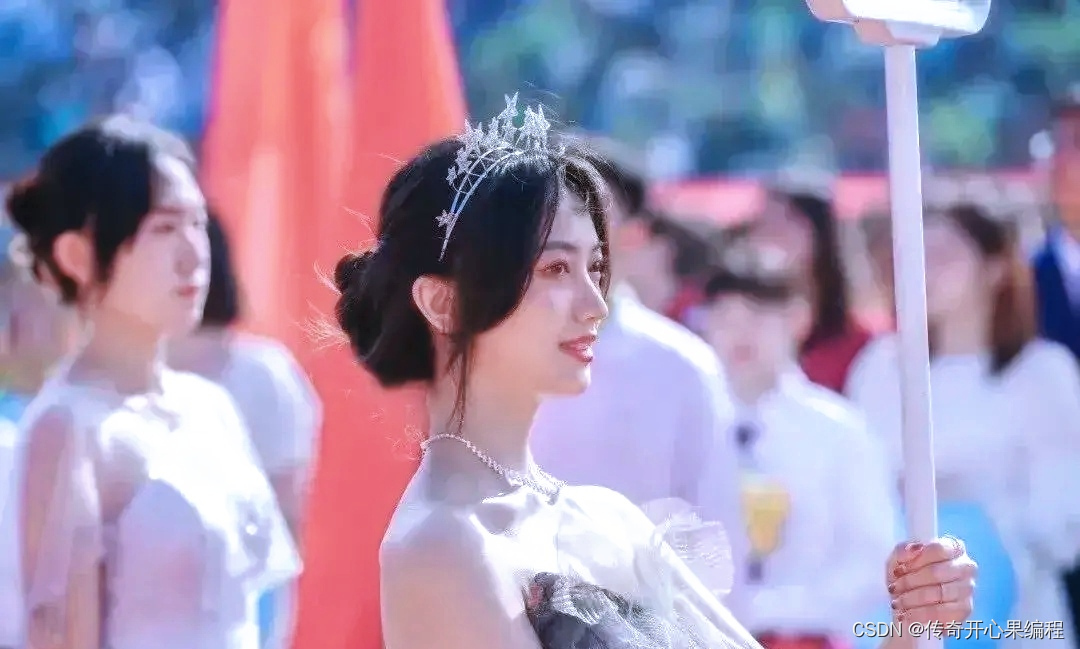 다음은 미녀의 출현, 사라짐, 점수 매기기에 애니메이션을 적용하는 샘플 코드입니다.
다음은 미녀의 출현, 사라짐, 점수 매기기에 애니메이션을 적용하는 샘플 코드입니다.
import pygame
import random
# 初始化游戏
pygame.init()
# 设置窗口大小和标题
screen_width = 800
screen_height = 600
window = pygame.display.set_mode((screen_width, screen_height))
pygame.display.set_caption("给美女打分 - 多人游戏模式")
# 加载背景音乐
pygame.mixer.music.load("background_music.mp3")
pygame.mixer.music.set_volume(0.5) # 设置音量
pygame.mixer.music.play(-1) # 循环播放背景音乐
# 加载音效
score_sound = pygame.mixer.Sound("score_sound.wav")
# 定义美女类
class Beauty(pygame.sprite.Sprite):
def __init__(self, x, y, image, score, special_attribute, speed):
super().__init__()
self.image = pygame.image.load(image) # 美女的图片资源
self.rect = self.image.get_rect()
self.rect.center = (x, y)
self.score = score # 美女的得分
self.special_attribute = special_attribute # 美女的特殊属性
self.speed = speed # 美女的移动速度
self.animation_timer = 0
self.animation_duration = 30
def update(self):
self.rect.x += self.speed
# 美女出现动画效果
if self.animation_timer < self.animation_duration:
self.rect.y -= 2
self.animation_timer += 1
# 定义分数类
class Score(pygame.sprite.Sprite):
def __init__(self, x, y, player_name):
super().__init__()
self.score = 0
self.player_name = player_name # 玩家名称
self.font = pygame.font.Font(None, 36)
self.text = self.font.render(self.player_name + ": " + str(self.score), True, (255, 255, 255))
self.rect = self.text.get_rect()
self.rect.center = (x, y)
self.animation_timer = 0
self.animation_duration = 30
def update(self):
# 分数增加动画效果
if self.animation_timer < self.animation_duration:
self.rect.y -= 2
self.animation_timer += 1
# 定义关卡类
class Level:
def __init__(self, target_score, beauties):
self.target_score = target_score # 目标得分
self.beauties = beauties # 美女列表
def is_completed(self, score):
return score >= self.target_score
# 创建精灵组
all_sprites = pygame.sprite.Group()
# 创建关卡列表
levels = [
Level(50, [
Beauty(screen_width // 2 - 100, screen_height // 2, "beauty1.png", 10, "可爱", 2),
Beauty(screen_width // 2 + 100, screen_height // 2, "beauty2.png", 20, "性感", 3)
]),
Level(100, [
Beauty(screen_width // 2 - 100, screen_height // 2, "beauty3.png", 15, "甜美", 3),
Beauty(screen_width // 2 + 100, screen_height // 2, "beauty4.png", 25, "迷人", 4)
])
]
num_players = 2 # 玩家数量
players = [] # 玩家列表
# 创建玩家对象和分数对象
for i in range(num_players):
player_name = "Player " + str(i+1)
player_score = Score(screen_width // 2, 50 + i*50, player_name)
players.append(player_score)
all_sprites.add(player_score)
current_level = 0
level = levels[current_level]
# 将当前关卡的美女添加到精灵组中
for beauty in level.beauties:
all_sprites.add(beauty)
# 加载排行榜数据
leaderboard_data = {
}
try:
with open("leaderboard.json", "r") as f:
leaderboard_data = json.load(f)
except FileNotFoundError:
pass
# 游戏主循环
running = True
clock = pygame.time.Clock()
spawn_timer = 0
difficulty_level = 1
while running:
clock.tick(60)
# 事件处理
for event in pygame.event.get():
if event.type == pygame.QUIT:
running = False
elif event.type == pygame.MOUSEBUTTONDOWN:
mouse_pos = pygame.mouse.get_pos()
clicked_sprites = [s for s in all_sprites if s.rect.collidepoint(mouse_pos)]
for sprite in clicked_sprites:
if isinstance(sprite, Beauty):
for player in players:
if player.rect.collidepoint(mouse_pos):
player.score += sprite.score
score_sound.play() # 播放得分音效
# 更新精灵组中的所有精灵
all_sprites.update()
# 控制美女的出现频率和移动速度
spawn_timer += 1
if spawn_timer >= 60 / difficulty_level:
beauty = random.choice(level.beauties)
beauty = Beauty(screen_width + 50, random.randint(50, screen_height - 50), beauty.image, beauty.score, beauty.special_attribute, random.randint(2, 4))
all_sprites.add(beauty)
spawn_timer = 0
# 检查当前关卡是否完成
if level.is_completed(players[0].score):
current_level += 1
if current_level < len(levels):
level = levels[current_level]
for player in players:
player.score = 0
for beauty in level.beauties:
all_sprites.add(beauty)
else:
running = False
# 绘制背景
window.fill((0, 0, 0))
# 绘制所有精灵
all_sprites.draw(window)
# 刷新屏幕
pygame.display.flip()
# 停止背景音乐
pygame.mixer.music.stop()
# 更新排行榜数据
for player in players:
if player.player_name not in leaderboard_data:
leaderboard_data[player.player_name] = player.score
else:
leaderboard_data[player.player_name] = max(leaderboard_data[player.player_name], player.score)
# 保存排行榜数据
with open("leaderboard.json", "w") as f:
json.dump(leaderboard_data, f)
# 输出排行榜
sorted_leaderboard = sorted(leaderboard_data.items(), key=lambda x: x[1], reverse=True)
print("排行榜:")
for i, (player_name, score) in enumerate(sorted_leaderboard):
print(f"{
i+1}. {
player_name}: {
score}")
# 退出游戏
pygame.quit()
이 샘플 코드에서는 미녀의 외모와 점수를 애니메이션화합니다. Beauty클래스와 클래스 에서는 애니메이션의 지속 시간과 현재 시간을 제어하기 위해 및 속성을 Score추가했습니다 . 이 방법 에서는 애니메이션 효과를 얻기 위해 애니메이션 진행에 따라 뷰티 및 스코어 개체의 위치를 수정합니다.animation_timeranimation_durationupdate
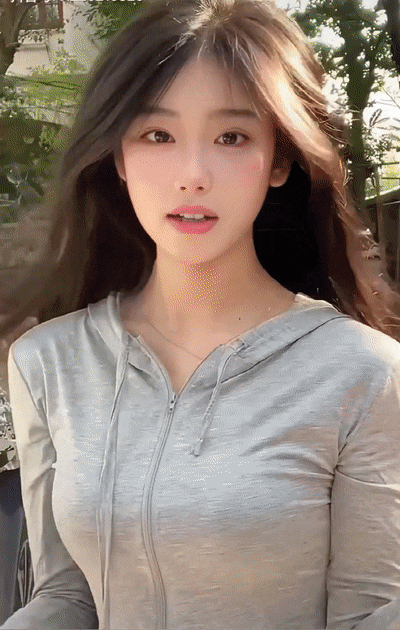
참고: 해당 뷰티 이미지 리소스("beauty1.png", "beauty2.png", "beauty3.png", "beauty4.png")를 준비하고 샘플 코드와 동일한 디렉터리에 넣어야 합니다. 음악 파일과 음향 효과 파일의 파일 경로가 올바른지 확인하세요.